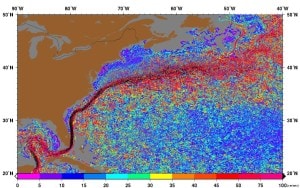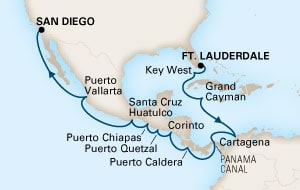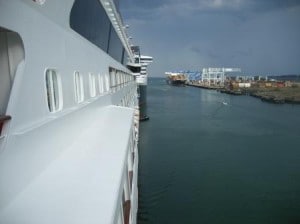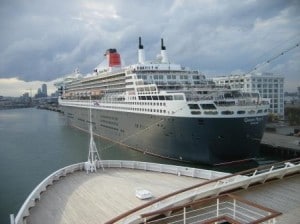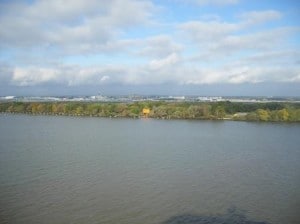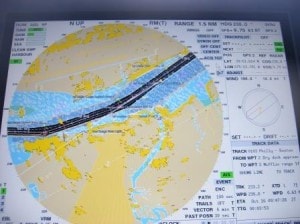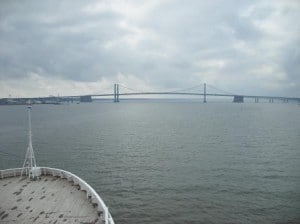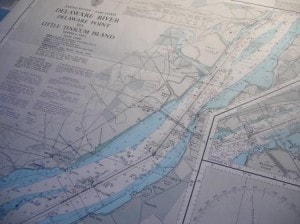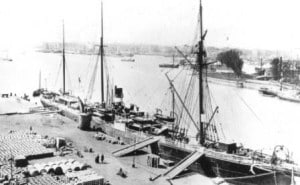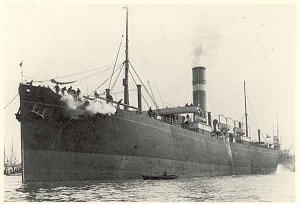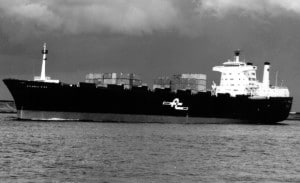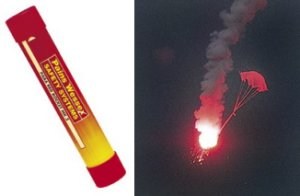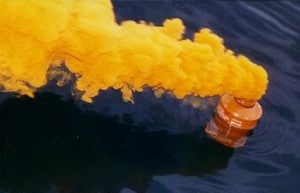Today we are sailing southwards towards Florida and we are about 40 miles off the coast of New Jersey. The reason that we are so far out is to avoid the Gulf Stream which lies currently fairly close to the coast. When you are in it, and it is against you, you can have an adverse current of anything between 1.5 and 4 knots and that slows the ship down considerably. Then to maintain the schedule, you have to go faster and that costs more fuel.
By sailing outside the Gulf Stream you solve that problem and you might even enjoy a bit of counter current; getting a free push in the back. It might cost a few miles extra in the distance to make but it only takes a quick calculation to decide what works the best. The NOAA and the Military publish charts with the latest location of the axis of the gulfstream but the charts give the situation that has already occurred as it take some time to correlate all the measurements taken into a decent chart. Thus looking for the edge of the Gulf Stream is a sort of quantified gamble. You have the best information available but nothing you can do about it if Mother Nature suddenly decides to shift the Gulf Stream a few miles one way or the other.
By tomorrow lunch time we should have a good idea of how good the plan worked. In the meantime the weather is very wobbly and the ship is quite lively even with the stabilizers working overtime. Hurricane Gonzales has moved away and only a few remnants of the swell it caused are still there, but its space has been very quickly taken up by a frontal system moving in from the shore. The Weather people have very nice descriptions for it but I just keep it simple. You should see a hurricane as a vast rotating vacuum cleaner that sucks everything away that is close enough to its vortex. That leaves a void that has to be filled somehow and thus somewhere a weather front will gather momentum and comes charging in. That has happened here was well and this morning we had 35 to 45 knots of winds blowing. A good gale in other words. Nearly full on the starboard side beam but with pumping water over you can keep the ship nicely up straight. However, the longer the wind blows the more grip it gets on the waves and the higher it will whip them up.
Since the late morning that has been happening and now the waves are on occasion too big to be fully handled by the stabilizers and that makes the ship move a bit. Stabilizers normally filter out 90% of a roll and that means that things would be very unpleasant if they would not be working. The forecast has been predicting about 30 knots but there is at least 10 knots more out there and thus there is also more swell, and movement…than anticipated . But it is not a heavy storm and the outside decks are open for all to enjoy and the relative wind on the deck is less due to the ship moving forward under an angle to the wind. Still being out there means that it is bracing. Most guests get back inside fairly quickly as they find it too bracing. Luckily there is enough to do inside the ship with presentations, shows and all sorts of gatherings.
I normally do not get the chance to nose around during a sea day but today I am in between all sorts of things and mainly cleaning up my administration before the head office gets going again tomorrow. So today I had a look at the Art Auctioneer who had her first show day of the cruise. I was impressed how busy it was. Either we have a lot of Art Connoisseurs on board or it was the free champagne that did it. Tomorrow is our 2nd sea day and, again if the predictions hold, by midnight the winds are supposed to ease off to about 20 knots and that means that the seas & swells will start to subside as well.
